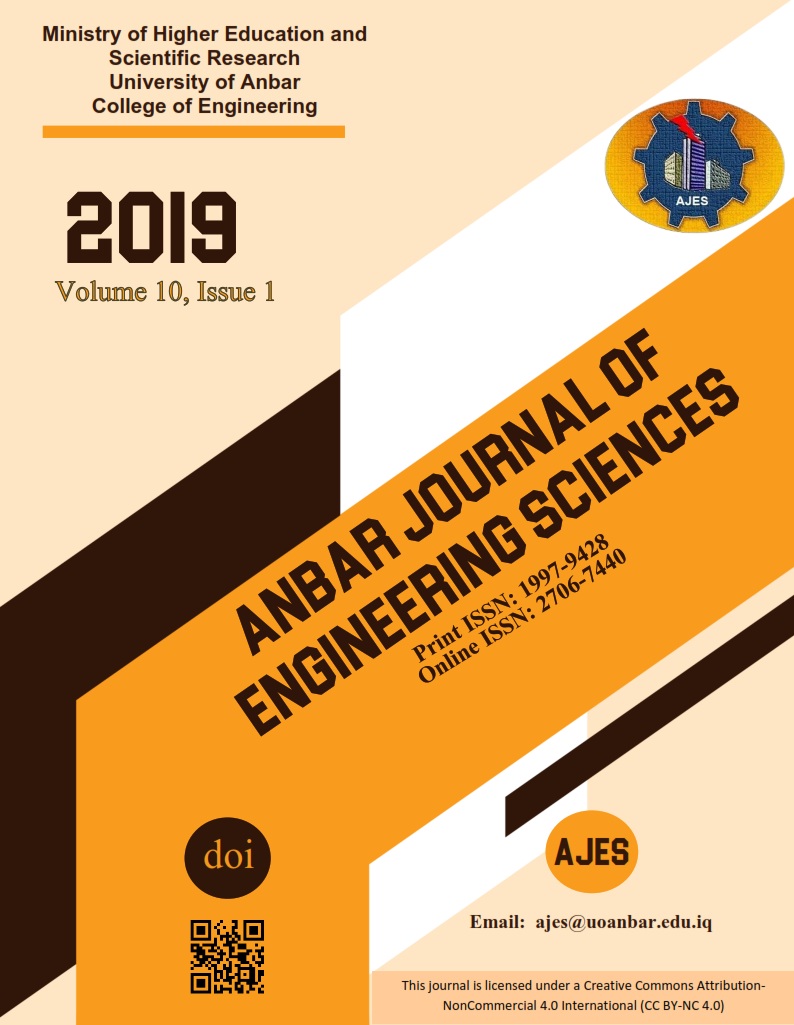Abstract
The main purpose of this search is to study the punching shear behavior of fourteen specimens of Reactive Powder Concrete (RPC) two-way flat plate slabs, half of these slabs have been exposed to a high temperature up to 400 C° by using an electric oven. All slabs have dimensions of (400x400x60) mm, with steel reinforcement mesh of (Ø6mm) diameter. Laboratory tests show that there is an increase in the value of First Crack Loading (FCL) and Ultimate Load (UL) by (208, and 216.67) % and a decrease in deflection by (56.85) % due using slab with complete reactive powder relative to a slap made of normal concrete. The use of the (RPC)mixture in layers in slabs gave results close to the slab which consists of full (RPC) this gives the benefit of more than the use of a slab that contains full reactive powder concrete in terms of cost, the increase was in FCL and UL by (130.8, 169.23, 102.7 and 135.135) % and a decrease in the value of deflection by (37.17, 47.64) %. The use of a partial reactive powder mixture also showed good results, and by increasing the dimensions of the RPC area, the results were better. the increase in FCL and UL by (54, 116, and 185) % and (53, 116.67, and 166.67) % and a decrease in value of deflection by (36.12, 42.4, and 50.26) % from reference slab. When slabs are subjected to high temperatures, there may be a decrease in the value of the FCL and UL and an increase in the value of deflection when compared to models not exposed to high temperature. But when compared to the reference slab with the same circumstance showed an increase in the value of the FCL and the rate ranged between (50- 200) % and the UL was the ratio ranged between (51.35-208.1) % and a decrease in the value of the deflection where the ratio ranged (21-46) %
